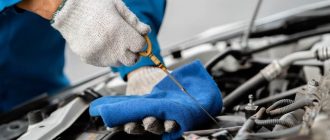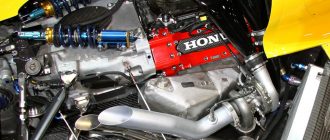## **How to Make a Car Engine That Runs on Water**
**Introduction**
Conventional gasoline-powered vehicles are a major contributor to greenhouse gas emissions and air pollution. In an effort to reduce these harmful emissions, scientists and engineers have been exploring alternative fuel sources for automobiles. One such alternative that has gained much attention is the use of hydrogen as a fuel.
Hydrogen is a clean-burning fuel that produces only water as a byproduct. This makes it an ideal fuel for vehicles, as it does not produce any harmful emissions. However, hydrogen is a highly flammable gas and must be stored and handled with care. In addition, hydrogen-powered vehicles require specialized fuel cells to convert the hydrogen into electricity. These fuel cells are expensive and can be difficult to maintain.
Another alternative fuel that has been proposed is water. Water is a renewable resource that is readily available and does not produce any harmful emissions. However, water is not a flammable fuel and cannot be used directly in a conventional gasoline engine. In order to use water as a fuel, it must first be converted into hydrogen and oxygen.
**Converting Water into Hydrogen and Oxygen**
There are two main methods for converting water into hydrogen and oxygen: electrolysis and photolysis. Electrolysis is a process that uses electricity to split water molecules into hydrogen and oxygen. Photolysis is a process that uses sunlight to split water molecules into hydrogen and oxygen.
Electrolysis is a relatively simple process that can be carried out using a variety of materials. The most common type of electrolyzer uses a platinum electrode to split water molecules into hydrogen and oxygen. Electrolysis is a very efficient process, but it requires a lot of electricity.
Photolysis is a less efficient process than electrolysis, but it does not require any electricity. Photolysis can be carried out using a variety of materials, including titanium dioxide and zinc oxide. Photolysis is a very slow process, but it can be accelerated by using a catalyst.
**Using Hydrogen and Oxygen to Power a Car Engine**
Once hydrogen and oxygen have been produced from water, they can be used to power a car engine. There are two main types of hydrogen-powered engines:
* **Internal combustion engines:** These engines burn hydrogen in a cylinder to create heat. The heat is then used to expand a piston, which drives the crankshaft.
* **Fuel cell engines:** These engines use hydrogen and oxygen to create electricity. The electricity is then used to power an electric motor, which drives the crankshaft.
Internal combustion engines are less efficient than fuel cell engines, but they are also less expensive. Fuel cell engines are more efficient than internal combustion engines, but they are also more expensive.
**The Challenges of Using Water as a Fuel**
There are a number of challenges that must be overcome before water can be used as a viable fuel for cars. These challenges include:
* **Producing hydrogen and oxygen from water:** Electrolysis is a very energy-intensive process, and photolysis is a very slow process.
* **Storing hydrogen and oxygen:** Hydrogen and oxygen are both gasses, and they must be stored in specialized tanks. These tanks can be heavy and expensive.
* **Distributing hydrogen and oxygen:** Hydrogen and oxygen are not as widely available as gasoline, and they must be distributed to fueling stations.
* **Cost:** The cost of producing, storing, and distributing hydrogen and oxygen is still too high for water to be a viable fuel for cars.
**Conclusion**
Water is a renewable resource that has the potential to be a clean and efficient fuel for cars. However, there are a number of challenges that must be overcome before water can be used as a viable fuel for cars. These challenges include producing hydrogen and oxygen from water, storing hydrogen and oxygen, distributing hydrogen and oxygen, and reducing the cost of producing, storing, and distributing hydrogen and oxygen.
Despite these challenges, there is a growing interest in using water as a fuel for cars. As the cost of producing, storing, and distributing hydrogen and oxygen decreases, water could become a viable alternative to gasoline.




